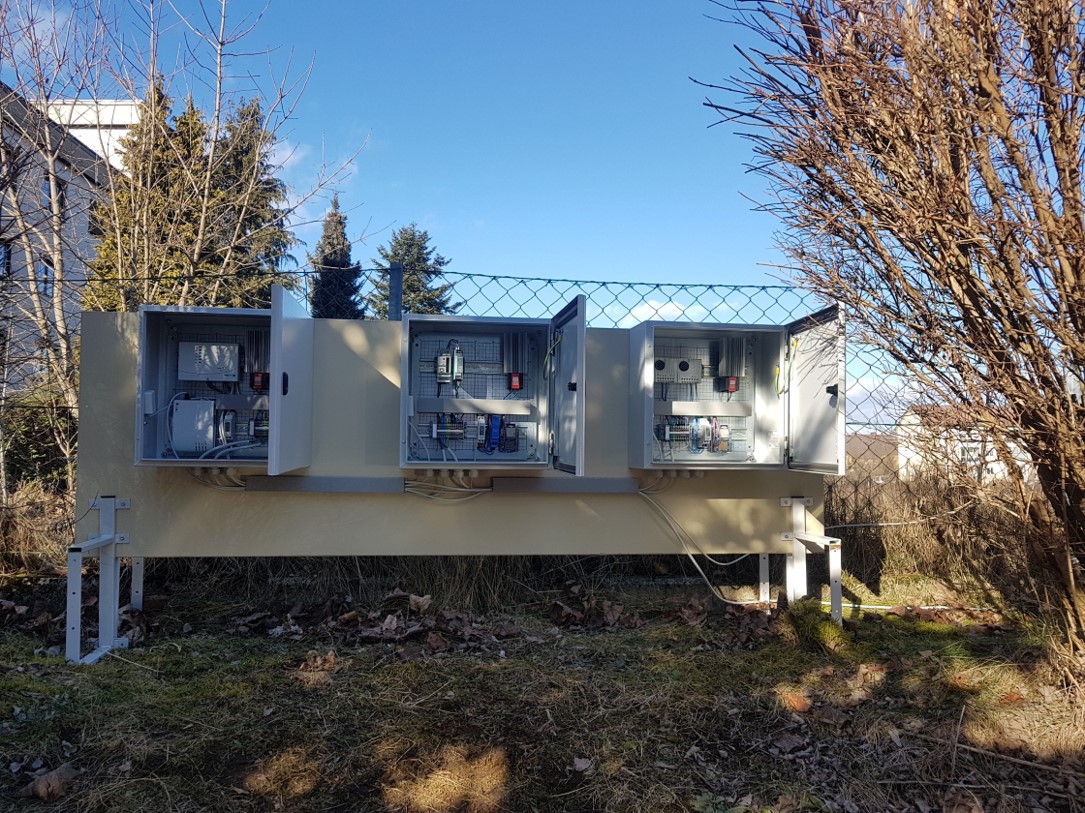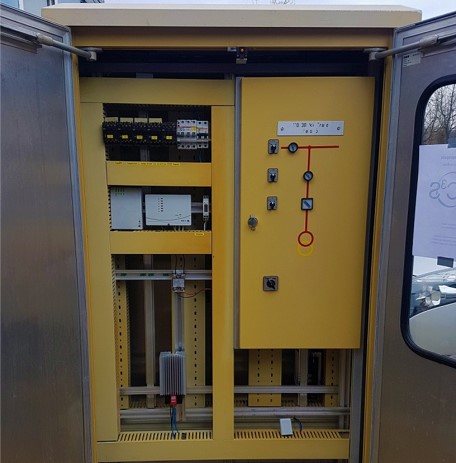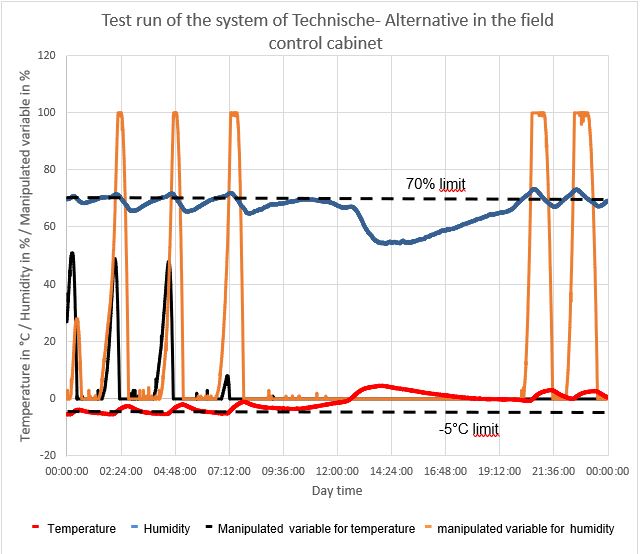Kevin Bettsteller
Hardware Engineering
Responsible for the research about dewpoint and humidity, the assambly plans for the systems and the construction of the test systems.

Um die Entstehung von Kondenswasser in den Feldsteuerschränken der Kärnten Netz GmbH zu verhindern, werden aktuell Heizelemente mit einem Thermostat verwendet, welche die Temperatur im Inneren des Feldsteuerschrankes dauerhaft höher als die Außentemperatur halten. Durch den andauernden Jahresbetrieb der Heizelemente ist diese Betriebsführung äußerst energieineffizient. Das Field Control Cabinet Climate System kurz FC3S ist ein intelligentes Regelungssystem, welches die Betauung in einem Feldsteuerschrank mit Hilfe einer energieeffizienten Regelung verhindert. Sensoren messen die Temperatur und relative Luftfeuchtigkeit des Feldsteuerschrankes. Diese Messdaten werden von einer Regelungseinheit verarbeitet. Noch bevor die Verhältnisse der Temperatur und Luftfeuchtigkeit zur Entstehung von Kondenswasser führen können, reagiert die Regelungseinheit darauf und setzt Gegenmaßnahmen durch entsprechende Ansteuerung der Heizelemente.
In order to prevent condensation of moisture in field control cabinets the Kärnten Netz GmbH uses heating resistors alongside a thermostat. This system keeps the temperature inside the cabinets higher than the outside. Due to the continuous service throughout the year, this setup is exceedingly energy inefficient. The Field Control Cabinet Climate System short FC3S is an intelligent feedback control system, which prevents the condensation of steam in a control cabinet in an energy efficient way. The temperature and humidity on the inside of the field control cabinet is measured by sensors. The measured data are processed by a control unit. Before the proportions of the temperature and humidity could cause condensation of moisture the system will enact countermeasures by a heating resistor.

In order to evaluate the most suitable system for this task, the systems were tested under difficult test conditions.
From the first test runs it became apparent that the humidity could not be adjusted as fast as the temperature. Thus,
the control of humidity was the biggest task. For this reason, an attempt was made to achieve a rapid increase in humidity.
For this purpose, the systems to be compared were installed in experimental cabinets. These test cabinets
were then mounted on a rack. Thus, an objective measurement of the systems under the same conditions could be accomplished.
To achieve a rapid increase in humidity, the experimental setup was first carried into the school building, where it was warmed to
room temperature. Subsequently, the experimental set-up was again quickly carried outside, where all systems were suddenly cooled down.
The test was conducted on the afternoon of January 16, 2018. The outside temperature on this day averaged 10°C. In addition, wet wipes
were placed on the heating resistors to accelerate the increase in humidity.
With the results of the measurement and consultation with the customer, only the system of Technische-Alternative was used for the test in the field control cabinet.
For further tests heating resistors with 30 W and 150 W heating capacity were available. Thus, different heating resistor combinations could be tested. As a result,
it was possible to determine which heating power is required for the control task.
The following heating resistor combinations were used:
1. Two heating resistors, each with 150 W heating power
2. A heating resistor with 150 W heating power
3. A heating resistor with 30 W and a heating resistor with 150 W heating power


The humidity and temperature could be corrected without problems by the system.
The values only slightly exceeded the limits (dotted lines). The manipulated variables (percentage value of the heating power) show that the parameters of the control are optimally set.
The heating power did not increase immediately to 100 %, since this was not necessary for the regulation. The manipulated variable was lowered even before reaching 100 %.
The reason for this is that even with low heat output, the temperature rose above the -5°C limit. Thus, the energy consumption was kept lower.